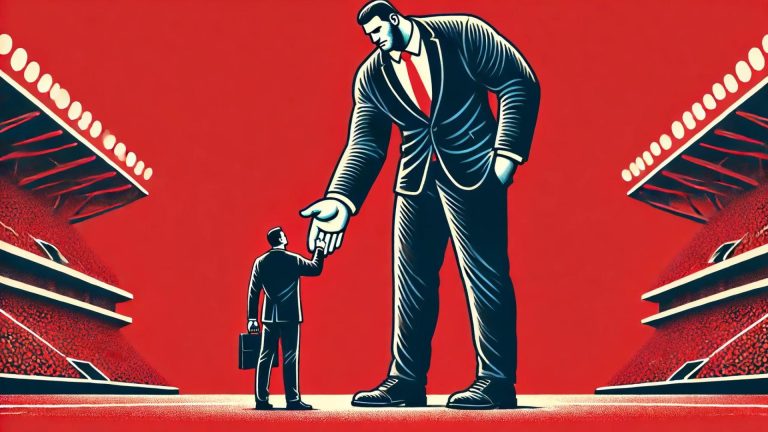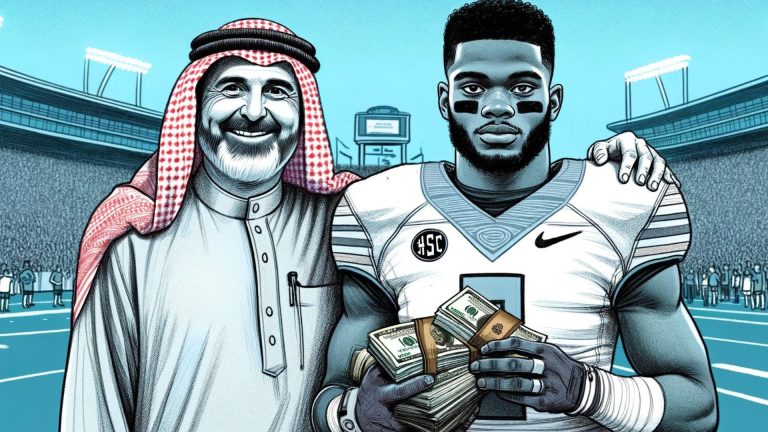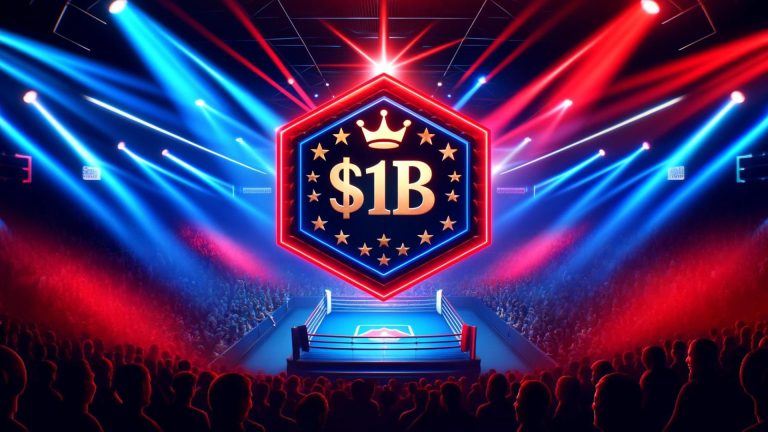There’s a big boxing match coming up this Saturday.
Former YouTuber Jake Paul is taking on UFC legend Anderson Silva in the boxing rink.
Both fighters are anticipated to take home millions.
Which makes sense…
Boxing, despite being a niche sport, usually has several fighters earn their way onto the annual lists of highest-paid athletes.
The big four sports of football, baseball, basketball, and hockey are typically characterized by multi-year contracts with a mix of guaranteed and non-guaranteed money.
Fighter pay is a beast in and of itself.
In today’s post, we’ll demystify the business behind boxing.
Let’s Dive In 👇
How Boxers Make Money
Fighters can make money in a multitude of ways:
- Fight night purse (negotiated fixed split between fighters)
- Pay-per-view share (tiered rate based on buys)
- Advertisement revenue
- Live stadium gate share (negotiated fixed split between fighters)
Here are the five highest-grossing fights of all time: 👀
- $960M: Mayweather-Pacquiao (’15)
- $938M: Mayweather-McGregor (’17)
- $304M: Mayweather-Canelo (’13)
- $265M: Mayweather-De La Hoya (’07)
- $206M: Holyfield-Tyson (’97)
That’s a lot of dough.
But not all of it goes to the fighters…
There are a lot of people with their hands out (and actually a surprisingly low amount goes to the men putting their lives at risk).
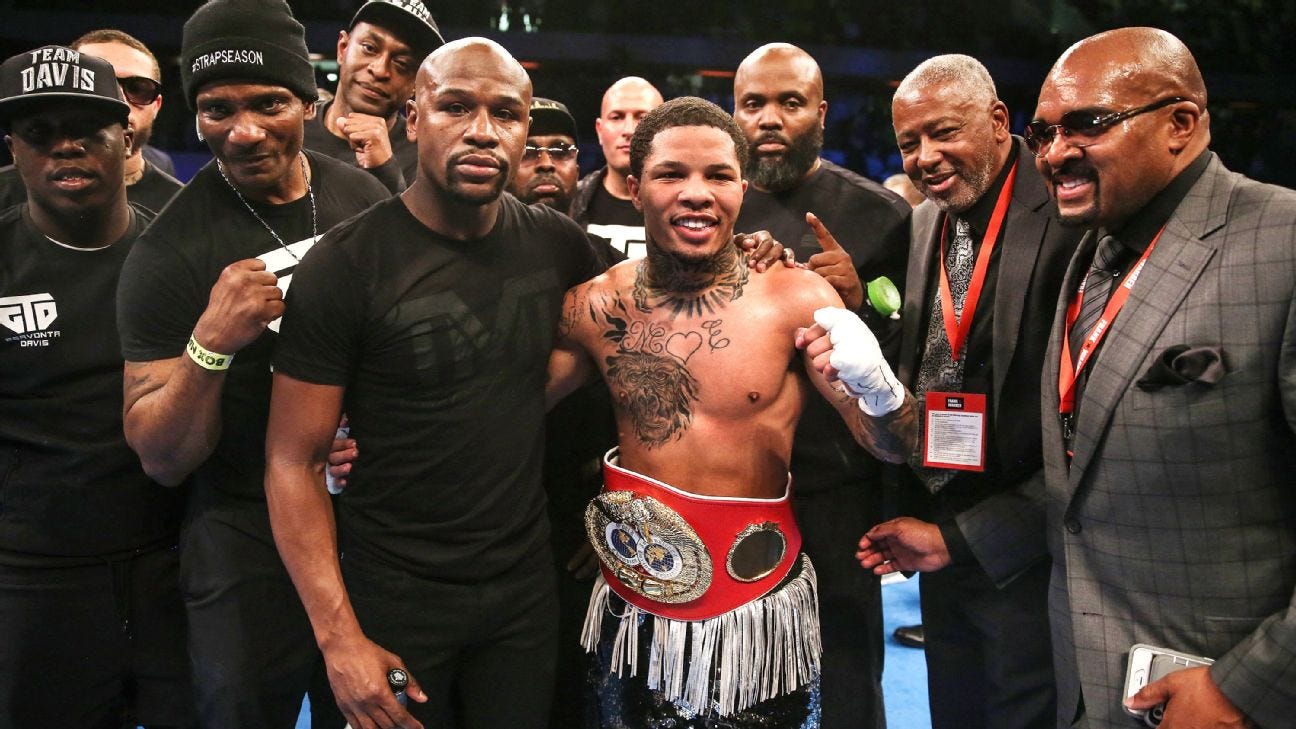
It’s important to understand the different roles in boxing.
Splitting Cuts of Boxing Matches
Promoters organize the fight card, which features multiple fights in one night. They collect money through ticket sales, the sale of broadcast rights to TV networks, and site fees.
But before any of this happens they usually have to bid amongst a pool of promoters to secure the rights from the boxing sanctioning bodies:
- The WBA (World Boxing Association)
- WBC (World Boxing Council)
- IBF (International Boxing Federation)
- WBO (World Boxing Organization)
- The Ring
Promoters then work with each boxer’s manager to organize a card with multiple fights.
Think of boxing managers as the “agent” for the fighter. Once the final bell rings, the promoter cuts a check for the fighter in the locker room.
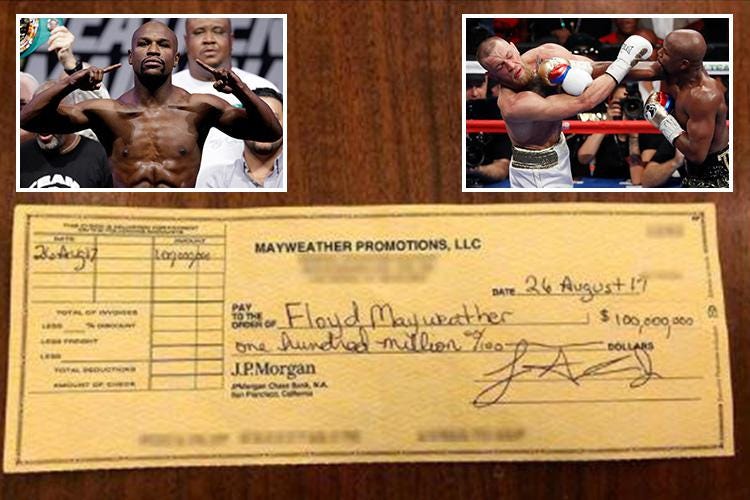
Here’s a breakdown of the fighter’s crew and their respective take rates:
- Promoter – 20% to 25% of the fight night purse, with a max of up to 33% in the USA
- Manager – 15% and 20% of all professional earnings (purse, ads, commercials, PPVs, live gate, etc.)
- Boxing trainer – 10% to 20% of fight night purse
- Cutman – typically 2% of the fight night purse
- Sanctioning body – ranges from tens to hundreds of thousands depending on how many belts are up for grabs and which state the fight is held in
- Cardio & Strength trainers, Sparring partners, Chefs / Nutritionists – all pull a fixed fee for their contributions during fight camp
- Lawyers, Accountants, Advisors, etc all pile on hourly fees…
Floyd Mayweather is rumored to have made $300M (26% of total fight dollars) for his fight in 2015 with Manny Pacquiao.
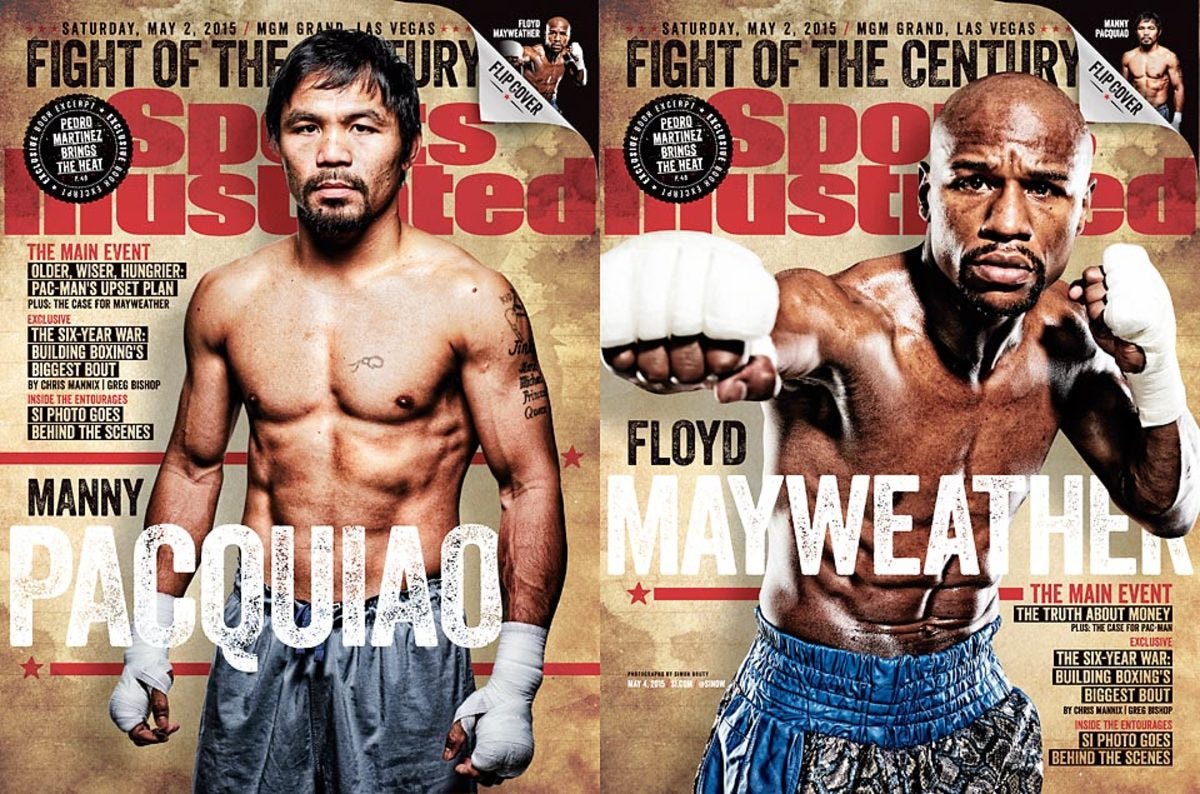
But Mayweather is an outlier, not the norm.
At the end of the night, a boxer is lucky to take home 8 to 10% of the total dollars the fight generates, and 50% of his individual gross pay.
Mayweather also found a hack in the system – he served as his own promoter under the Mayweather Promotions umbrella.
This was a chess move, as Pacquiao, who made $120M for the fight, ceded 27%, or $32M, to his promoter Bob Arum.
Putting it in perspective
There’s an elephant in the room we still haven’t addressed: taxes.
Fighters hate fighting in CA and NY, both of which have high state income taxes.
Besides the bright lights and gambling crowd, Nevada’s lack of state income taxes are another reason why it’s THE place for big money fights.
With all the people getting paid, there’s a reason it’s called “prize fighting”. But the big money fights are few and far between.
In fact, the top ten fights in a given year make up 95% of all fight income, and the average fight purse is only $70K.
Income inequality in the sport is stark.
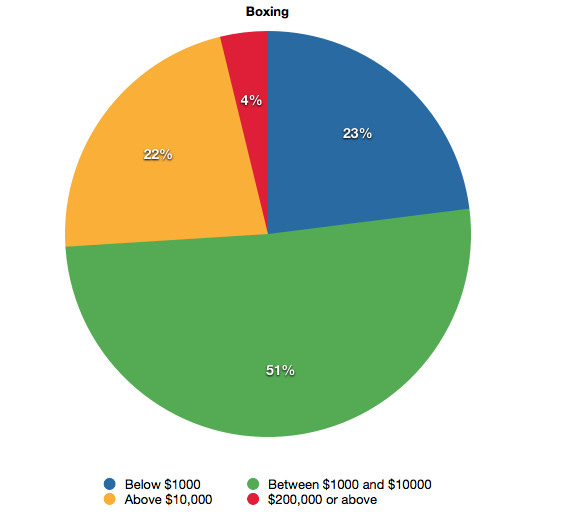
The big-money prize fighters are analogous to a Fortune 500 CEO vs the average employee: their pay is probably separated by a factor of 100x.
It’s crazy when you compare boxing to the NBA where the 12th guy on the bench is still pulling a couple of million bucks a year and is maybe off by a factor of 10x to 20x the squad’s star player.
It’s hard to un-see all the dollars exchanging hands on fight night once you dig into the economics.
Although it’s two people with gloves on — there’s a fight going on behind the scenes as well.
Crazy sport.



